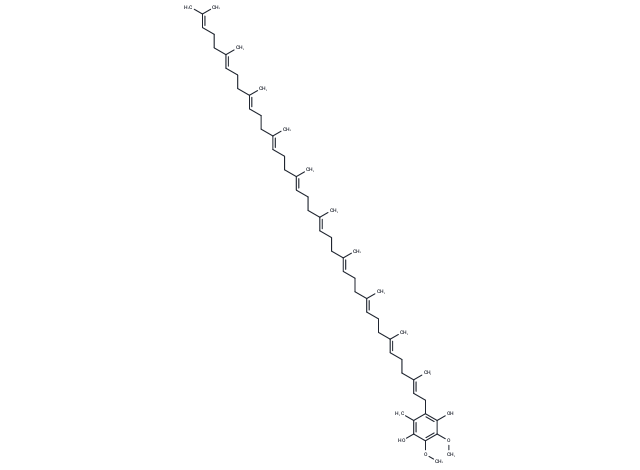Shopping Cart
Remove All Your shopping cart is currently empty
Your shopping cart is currently empty
Ubiquinol, the biologically active reduced form of coenzyme Q10 (CoQ10), Ubiquinol exerts its potent bioenergetic and antioxidant effects through the redox capability of its benzoquinone head group to accept and donate electrons, making it a promising therapeutic candidate for improving muscle function and physical performance.

| Pack Size | Price | USA Warehouse | Global Warehouse | Quantity |
|---|---|---|---|---|
| 1 mg | $50 | In Stock | In Stock | |
| 5 mg | $117 | In Stock | In Stock | |
| 10 mg | $172 | In Stock | In Stock | |
| 25 mg | $289 | In Stock | In Stock | |
| 50 mg | $428 | In Stock | In Stock | |
| 100 mg | $633 | - | In Stock | |
| 200 mg | $883 | - | In Stock |
| Description | Ubiquinol, the biologically active reduced form of coenzyme Q10 (CoQ10), Ubiquinol exerts its potent bioenergetic and antioxidant effects through the redox capability of its benzoquinone head group to accept and donate electrons, making it a promising therapeutic candidate for improving muscle function and physical performance. |
| In vitro | The CoQH2 analogue Ubiquinol (mitoCoQH2) is used to protect DHODH cells from suppressing GPX4 (i.e. RSL3 and ML162), which has a fatal effect on the lipid profile of the granular body. [5] |
| In vivo | The levels of these homologues are highest in heart with lesser amounts occurring in kidney, liver and other organs. In liver and blood plasma, the UQred homologue amounted to 70-80% of the total UQ (UQox + Ubiquinol = t-UQ). Ubiquinol is less than 30% of t-UQ in other tissues and blood cells. t-UQ is much higher in leukocytes and platelets in blood than in erythrocytes. In erythrocytes, t-UQ is exclusively located in the cell membranes.Ubiquinol is also found in all subcellular components isolated from the liver and kidney, and its ratio is approximately the same as the ratio of ubiquinol/t-UQ in the entire organ. The levels of Ubiquinol per mg protein in subcellular fractions from liver is highest in mitochondria, with lesser amounts present in plasma membranes, lysosomes, Golgi complex, nuclei, microsomes and cytosol. In the mitochondria, the outer membranes are richer in t-UQ than the inner membranes[4]. |
| Synonyms | Ubiquinol-10, reduced coenzyme Q10, CoQH2-10, CoQH2 |
| Molecular Weight | 865.36 |
| Formula | C59H92O4 |
| Cas No. | 992-78-9 |
| Smiles | C(/C=C(/CC/C=C(/CC/C=C(/CC/C=C(/CC/C=C(/CC/C=C(/CC/C=C(/CC/C=C(/CC/C=C(/CCC=C(C)C)\C)\C)\C)\C)\C)\C)\C)\C)\C)C1=C(O)C(OC)=C(OC)C(O)=C1C |
| Relative Density. | 0.951 g/cm3 (Predicted) |
| Storage | store at low temperature,store under nitrogen | Powder: -20°C for 3 years | In solvent: -80°C for 1 year | Shipping with blue ice/Shipping at ambient temperature. | |||||||||||||||
| Solubility Information | H2O: < 1 mg/mL (insoluble) DMSO: 5 mg/mL (5.78 mM), Sonication is recommended. | |||||||||||||||
Solution Preparation Table | ||||||||||||||||
DMSO
| ||||||||||||||||
| Size | Quantity | Unit Price | Amount | Operation |
|---|

Copyright © 2015-2026 TargetMol Chemicals Inc. All Rights Reserved.